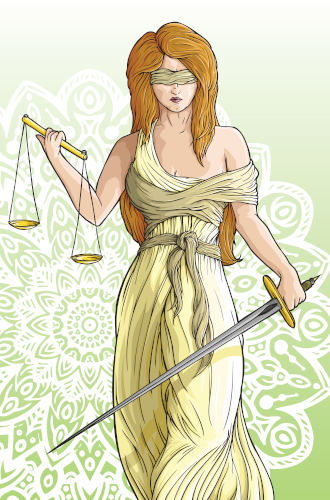 Encouraging Creativity
Encouraging Creativity
Copyright law is used to encourage an elevated level of creativity in the artforms, most notably literature, while granting the artist sizeable terms of security – the lifespan of the artist along with seventy more years – against copying.
Copyright law is used so as to protect the elements that are expressive of a wider range of works – i.e. graphical works, musical composition, movies, music, architecture, books, dramatic works, computer programs, and the like –, but it should be noted that it doesn’t encompass any ideas or facts.
Best Copyright Law Books
Complete and Exclusive Control
Copyright law enables the holder of the copyright complete and exclusive control over the reproduction, distribution, and/or selling of the material at hand. Copyright law tries to make a kind of equilibrium between the need of people to freely exchange ideas and the intellectual property that artists have.
The need for a Copyright law came along with the growing development and progress of technology in communications during the period of the industrial age. There were overwhelming concerns for the protection of the rights of the authors and artists, outside of their own nations.
Made in France
The first country to ever have something resemble our Copyright law was France in 1852, as they extended the protection of the copyright laws to all authors, regardless of their descent or country of origin. We’ll take a look at several books that deal with the issues and intricacies surrounding Copyright law, right now.
The Copyright Handbook by Stephen Fishman
 Benefitial
Benefitial
Stephen Fishman published his superb book The Copyright Handbook: What Every Writer Needs to Know in the year of 2011.
It is widely believed that anyone interested in writing, or already a capable author, or that creates any form of intellectual property, will find great benefits upon acquiring and the subsequent reading of Fishman’s wonderful volume.
Thorough
The book, itself, encompasses all the facets of copyright law. It starts out with the fundamentals of the terms, and, in due time, moves on to more complicated topics. Quite the meticulously written, concise, and thoroughly analyzed book, while retaining the conversational or casual air and tone, that Stephen has written.
Readers have, however, said that it isn’t a book to just devour on a single seating, but more so one that you can pick up for reference when a need arises or a question irks the mind. The table of contents – something that we don’t often give enough attention or praise to – is masterfully detailed, and so is the index. This allows for breezy maneuvering with the topics.
All the Questions Answered
The book tackles and deals with the very common issue that writers face – how can they acquire absolute copyright protection for their original product? Stephen’s book answers all the questions that one might have, and then some.
The reader learns how to properly register the copyright, to how to react to copyright infringement, to comprehension of the ‘fair use’ rule, and all the way to copyright transferring. Not a stone is left unturned by the conscientious and scrupulous eye of Fishman.
Periodically Updated
The book has, also, been updated to cope with the changes in the implicit laws. While it can be dry at times, the book does wonderfully and aptly what it sets out to, and this is a very commendable feat.
Understanding Copyright Law by Marshall A. Leaffer

 Revised and Updated
Revised and Updated
Author Marshall A. Leaffer published his highly insightful book Understanding Copyright Law in the year of 1989. Since its publication more than thirty years ago, Leaffer has revised and updated it so as to be in line with the ongoing progress and changes in the social order, and thus in Copyright law.
It is no secret that the changing landscape of laws – especially that of Copyright law – has taken dramatic turns and alterations over the course of time.
Game Changers
For example, when Leaffer released the fourth edition of ‘Understanding Copyright Law’ back in the year of 2005, things were only beginning to change. Since then, on the playing field entered various digital technologies, social media, and the like. YouTube, Facebook, Google, and such, all had great impact on the modifications needed to be made to Copyright law.
For this reason, the fifth edition of ‘Understanding Copyright Law’ was released in 2010, took care of and incorporated all of the most recent – relative to the time period – developments and changes in the legislative and case laws, taking special care to deal with the challenge and slight menace that the digital age was.
Clear and Precise
This fifth edition was written with an outstanding scrupulousness and attentiveness, remaining clear and precise while delivering on all of the things that it implied. Oddly enough, while it reads like a true analytic text, it isn’t as dry as some other books that tackle the same subject matter.
In fact, this quality makes it a lot easier to read and digest. Since 2010, it has been updated twice, with the seventh edition being the most recent. Even if something hasn’t been dissected by Leaffer in his book in the most acute manner, there are enough tips, advices and tidbits to warrant reading and checking for help. Truly one of the best books on the subject.
Patents, Copyrights and Trademarks for Dummies by John Buchaca and Henri Charmasson

 Amazing Career
Amazing Career
Authors Henri Charmasson and John Buchaca released their co-authored book ‘Patents, Copyrights and Trademarks for Dummies’ back in the year of 2008. For a little background, Henri Charmasson is an attorney with a decades-long career in Intellectual Property law.
Major corporations have named him as a main adviser. Additionally, Henri’s name can be found on fifteen United States patents. John Buchaca is also from the Intellectual Property law field. The two of them have worked together for more than fifteen years.
Easy to Understand
Now that we have that out of the way, we can go into the book’s meaning. The book should, for all means and purposes, be read prior to undertaking any kind of ‘leaving your own footprint in the world’ action – that is before you produce or sign something. The book is, by and large, an easy to understand primer on IP law.
While written by attorneys with extensive careers behind them, it is intended and meant for a very broad audience. The main aim is to advise any kind of creator with an invention or an original product that he should be vigilant when protecting his property from unwanted copying.
Three Main Branches
The three main branches of IP protection are named in the title – Patents, Copyrights and Trademarks. Each shape of protection is wonderfully explained and elaborated on, speaking on the implied advantages and disadvantages, and helps the reader choose whichever form might be most beneficial for themselves.
If the reader can’t or doesn’t want to throw money away on lawyers and attorneys, then this book is a genuine godsend. While it can’t necessarily tell all readers what to do, it provides a wonderful overview of the processes and deeper intricacies concerning Copyright and Intellectual Property law.
Rules Remain the Same
There was a quote in the book that stuck out quite a lot, and as we close the review, we’d like to have our readers see it, too: ‘When you misuse your teddy-bear to beat your little sister, your mom confiscates the bear. The rules haven’t change with regard to IP rights.’
When Was the First U.S. Copyright Law Passed?
The American Copyright Law began with the introduction of the printing press to the country of England in the final years of the 15th century. The number of presses began to steeply grow, so authorities needed to find a way so as to control the publishing of books by way of enabling printers a nigh-monopoly on publishing there, in England.
Licensing Act
It was in 1662 that a Licensing Act was made so as to confirm this monopoly, thus creating a register of licensed books that may be administered by the Stationer’s Company. It, however, lapsed in 1695, as it led to a relaxation of government censorship. In 1710, the Parliament the Statute of Anne was made and enacted to address the growing fears and concerns of booksellers.
If we listen to the Article I, Section 8, Clause 8 of the United States’ Constitution, we can see that – ‘the Congress shall have power … to promote the progress of science and useful arts, by securing for limited times to authors and inventors the exclusive right to their respective writings and discoveries. ‘
The Copyright Act of 1790
However, the First Congress that implemented the copyright provision of the United States’ Constitution did so, for the first time ever, in the year of 1790. The Copyright Act of 1790 was made by using the model of the Statute of Anne, from 1710.
It enabled American authors to have and enjoy the right to (re)print and publish their work for a time span of about 14 years, and then to renew for a second period of 14 years. With it, was aimed to provide a motive to artists, scientists, and authors, to create original works by providing them complete monopoly.
Copyright Law and Graphics
Like with other forms of art, graphics and the Copyright law have a close relationship. Any form of graphic art, like painting, computer-made graphical art, sketching, drawings, designs, paintings in all forms, are all protected under the Copyright law. The Copyright law grants the artists an exclusive set of rights.
Copyright Infringement
If these rights are misused by anyone other than the author without permission, one is led to a situation of copyright infringement. The rights we mentioned given to the artists under the Copyright law contain the following: the right to make copies of the product, the right to distribute, to create similar, derivative works, the right to publicly perform or display one’s own work, and the like.
In the case of a copyright infringement, the perpetrator is sent a cease and desist letter, which is then followed by a lawsuit. Any form of unpermitted usage of the graphical art may lead to charges of copyright infringement
Huge Fine
The damages for the infringement can climb upwards of $150,000 by each violation if the court finds the infringement to be a wanton one. Fair use, in these cases, is what people call upon. In the case of graphics, fair use applies when the particular graphic is utilized for commentary, critiquing, educating, or parodying.
What does Copyright Law Protect?
Copyright law – as a form of IP law – is used to ensure security and protection of original works of authorship. These forms of authorship can be dramatic, musical, poetic, literary, then we have movies, songs, programs, etc. It is the case, however, that Copyright law doesn’t protect any ideas, systems, methods, or facts, except for the manner in which they are actually expressed.
Things that Fall Within Copyright Law
Here are a few other things that fall under Copyright law, such as:
Copyright law also protects websites, including all of the writings present – maybe a blog –, art, photography, and all other shapes of authorship that are under the law of Copyright. The domain name, however, is not subject to Copyright.
What is Not Protected
Recipes, in the form of a simple listing of arbitrary ingredients, aren’t protected by the Copyright law. If, though, it is coupled with a meaningful literary expression – a guide to how to make that particular recipe fruitful –, or a set of recipes in a cookbook, there might be ground for copyright protection of some kind.
Names of musical groups or bands, slogans, names, titles, or short phrases, are not under protection by the Copyright law. Copyright does protect literary expression in the form of a diary or memoir, for example, but only if the person bears the rights to the work.
What is Fair Use?
Broadly speaking, in its most general sense, fair use is defined as any form of copying a copyrighted material for the purposes of a limited and ‘transformative’ aim, like commenting, critiquing, parodying, and such, of a copyrighted work. These usages may be done and undertaken without the process of asking for permission from the owner of the particular copyright.
Form of Defense
In a layman’s terms, fair use is a form of defense against the accusation of copyright infringement. If your use falls under fair use, then you are not culpable for any form of copyright infringement.
Why is Copyright Law Important?
The Copyright law legally protects the works and intellectual property of an author. For this reason, it is extremely meaningful for book publishing, now more than ever in our time of lackadaisical digital distribution. While one can copyright what one has written, you cannot, for instance, copyright writing about a topic.
Constituting the Ownership
Copyright is very important for authors as it constitutes the ownership of the work as their very own. With this ownership, you are able to protect your work as intellectual property, thus controlling who has monetary gain from it – you and anyone you assign the particular rights to, for example a publisher.
Conclusion
In conclusion, we can say that the creation of the Copyright law made for the better of all artists, authors, scientists, and people of similar stature. It is the only way to guarantee the creators and the geniuses will receive and enjoy all the rights that come with their own intellectual property.
Important Books on the Subject
We discussed when the first Copyright law was passed in the United States, when the first iteration with even a semblance to the modern Copyright law was made – in France –, what Copyright Infringement is and what it means for the regular man, what Fair Use is, how Graphics and the Copyright law are interconnected, but before all that we took a look at three eminent and important books on the subject. They were the following ones.
- The Copyright Handbook: What Every Writer Needs to Know;
- Understanding Copyright Law;
- Patents, Copyright and Trademarks for Dummies;
Making Life More Enjoyable
What we can all do on the topic of Copyright law is be wary and be kind to the artists and authors that make our collective life just a bit more enjoyable and a bit easier to get through.
Michael Englert
Michael is a graduate of cultural studies and history. He enjoys a good bottle of wine and (surprise, surprise) reading. As a small-town librarian, he is currently relishing the silence and peaceful atmosphere that is prevailing.




